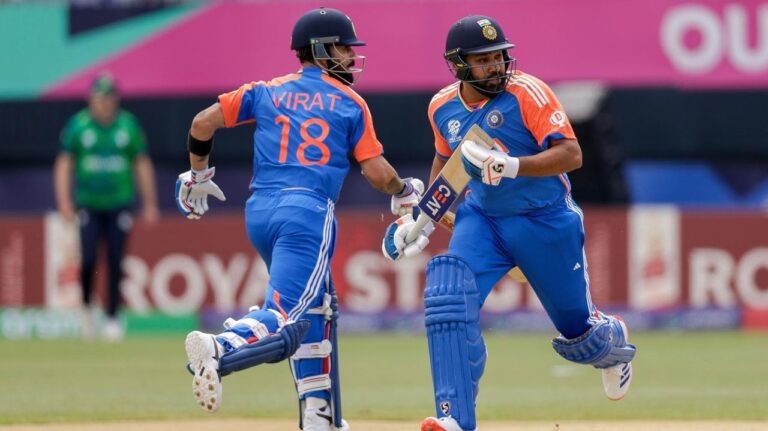For India’s cricket-mad fans, the T20 World Cup tournament thousands of miles away from home is as fascinating as the premiere of a Shah Rukh Khan blockbuster film and something you definitely don’t want to miss.
But when it’s India and Pakistan, it stirs passions unprecedented in cricket – passions that have their roots outside the sport itself.
This phenomenon is common in athletics, where competitions between nations are often subject to geopolitical pressures, most notably the multiple Olympic showdowns between the United States and the Soviet Union during the Cold War.
The India-Pakistan cricket match marks the latest chapter in a long history between the two countries, who have fought three brutal wars and simmered political animosity for 77 years. Tensions have risen so much that Indian teams never play cricket in Pakistan and Pakistani players are barred from taking part in India’s expensive professional cricket league.
That’s the backdrop for Sunday’s India vs. Pakistan match at the Nassau County International Cricket Stadium in Eisenhower Park in East Meadow, which should be a magnet for fans in the tri-state area with its burgeoning South Asian population. More than 80,000 people on Long Island identify as Asian Indian and more than 26,000 as Pakistani, according to 2020 census data, making Nassau an ideal location to market the match.
Both teams boast some of the world’s best players, including Virat Kohli and Rohit Sharma of India and Babar Azam of Pakistan. Fans will be reminded of the history of over 200 meetings between the two teams. But with the two countries having previously fought each other and the threat of ISIS disrupting the match, this match will be much more than just a game.

Pakistan captain Babar Azam takes a catch to get South Africa’s Aiden Markram out during the ICC Men’s Cricket World Cup 2023 match between South Africa and Pakistan on October 27, 2023 in Chennai, India. Credit: Getty Images/Gallo Images
In the past, fanatics have caused mayhem: In 1952, when Pakistan first toured India and beat the local team in the city of Lucknow, angry Indian fans attacked their own players. India and Pakistan have not played a Test match together in more than a decade.
Even today, violence breaks out in India when people are accused of rooting for the wrong side during televised India-Pakistan matches, particularly in university dormitories with Muslim students, and such behaviour is particularly criticised by right-wing Hindus.
“It doesn’t have to be this way,” said Sukomol Chakraborty, 72, an Indian immigrant who lives in Bellerose, Queens. He said India and Pakistan have a lot in common, including art, music, literature and film, and it would be a shame not to foster deeper cultural ties and encourage more exchanges.
The warmth and affection sometimes shown between people in both countries belies the deep rifts. When Sunil Gavaskar’s Indian team toured Pakistan in the 1980s and visited a market in Lahore, shopkeepers reportedly refused to accept money from the Indian players, saying: “You are our customers.”
This spirit of friendship is common among Indians and Pakistanis living abroad, including here on Long Island, where they often work in the same offices and shop in each other’s stores.
At times, the love of cricket has brought the two countries closer together.
Pakistan’s former military dictator, President Mohammed Ziaul Haq, a graduate of Delhi’s prestigious St. Stephen’s College, visited Jaipur in northern India in 1987 to watch a cricket match and engage in what he called “cricket diplomacy” aimed at repairing ties with India, reminiscent of the “ping-pong diplomacy” of the early 1970s that helped ease tensions between the United States and China.
The crowd will be thrilled when India and Pakistan meet on Sunday. It remains to be seen whether barriers between the nations will be mended.
Columnist Nirmal Mitra’s opinions are his own.


